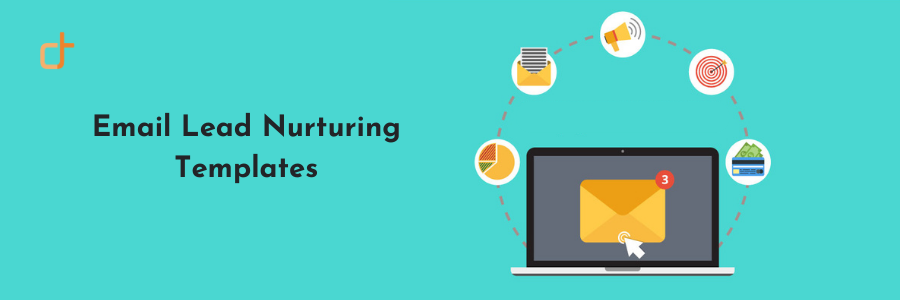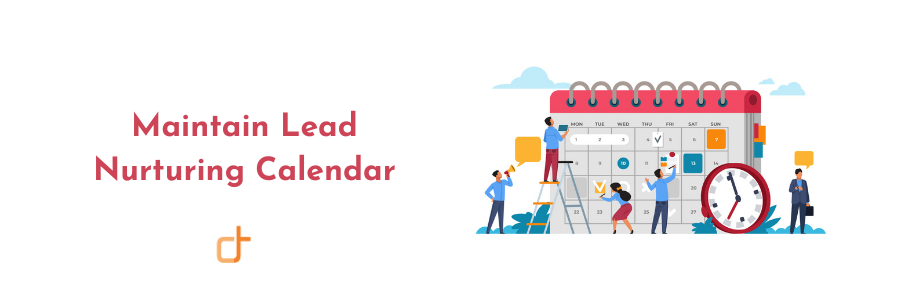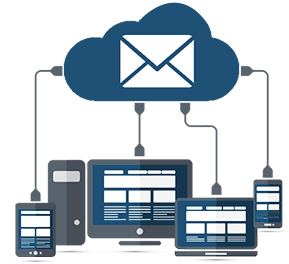Lead nurturing is a process of monitoring and planning the progress of leads through the sales funnel. It is accomplished by following a lead nurturing strategy for managing different communication touch points with customers. Customers must be targeted with relevant and personalized content so that they move forward in the sales pipeline.
Emails are an effective way of reaching out to customers. Implement email lead nurturing campaign to ponder questions for different stages of customers and create content to address those questions. Involve your sales team while framing questions to stay close to ground reality. Following are the lead nurturing best practices to improve your sales.
1. Email Lead nurturing templates

Having a suitable lead nurturing email template augments the message you want to convey. Still, many B2B businesses perform better using plain-text emails. Using an email template depends on a lot of your requirement. For example, a retail fashion brand would promote their product using images in the template. It is preferable to use minimal design with bold and branded typography with CTAs, for example, while sending abandoned cart alerts.
On special occasions like Christmas and New Year, brands personalize emails using product suggestions in the email. Compact email templates present a complex email in a simple format including text, images, CTAs, audio, video, and social media elements in a single email. It is important to focus on the taste of your target audience. Some marketers use graphic design to tell a story in a quick and concise manner.
2. Lead nurturing email campaigns
Lead nurturing email campaigns can be of different types. Choose the campaign based on the position of your target lead in the sales funnel. For example, a welcome campaign is used to send welcome emails to leads that sign up for your newsletters sharing information about your company, products and services. Welcome emails work best when sent through a senior person in marketing.
Use “top-of-mind” campaign to send regular emails to leads that are not yet ready for sales. Re-engagement campaign is deployed to engage old inactive leads. Launch promotional campaign when the prospect comes closer to purchase. Likewise, product-focused campaigns are used by marketers to address specific needs of the prospect.
3. Lead management system
Lead management is part of lead nurturing process where you capture leads, track their activities and behavior and make them sales-ready before passing them on to the sales team. Lead management system significantly improves marketing communication because it allows you to track and read emails from the LMS.
All your communication history is stored in one place. LMS allows you to sync your email inbox to ensure that all email exchange between you and your leads is systematically saved and no communication is lost. LMS is also capable to process check emails for valid server response, track lead counts, filter invalid data and prevent duplicate lead posting.
4. Email marketing automation

Bulk email service is an integral part of email marketing. It allows marketers to set replaceable text fields in the emails based on available information about leads. You can personalize bulk emails by addressing the customer by name and add specific information. The service even allows you to segment customers based on specific interests and send different emails.
Bulk email service is frequently used in email marketing automation.Based on triggers set by you, customers are automatically added to automation flows. This helps you to manage different email campaigns. Thus, automation is helpful in lead nurturing process because it enables you to send targeted emails to push customers towards sales besides targeting customers after purchase. Diadem’s Email Connect email marketing solution is a great way to nurture your lists, manage contacts, send email, track activities of your recipients, and seek technical support whenever you need. Contact us today to learn more about our email automation product.
5. Lead scoring
Lead scoring is a technique to allocate scores to leads based on their interests. For example, marketers use lead scoring to determine the degree of interest in a specific product so that prospects get sufficient attention from sales team for that product. Likewise, lead scoring is used in email marketing as a measure of engagement with your brand.
However, marketers should be cautious not to assign lead scores to every email opened as it may lead to inflated scores. The best practice would be to focus on submissions and page views generated from email. Various marketing automation tools allow you to assign scores linked to customers’ interaction with the email. Apart from that, lead scoring is done based on opens, clicks and conversions.
6. Segment lead nurturing emails
Segmentation helps you to keep your lead information clean and organized. Segment lead information captured through lead generation forms with simple qualifiers like company name, title, and area of interest. Encourage leads to share information by asking them to complete a short survey focusing on what information they would like to receive. Based on what information you receive, send different types of emails.
Send emails based on leads’ interaction with your content including their on-site and off-site behavior like frequency of website visits, pages visited, phone or email contact etc. Send lead nurturing emails that build a relationship between you and the leads. Send invites for blog subscription and social media follows. For a lead who is more engaged than others, send targeted offers by understanding their behavior.
7. Maintain lead nurturing calendar

Maintaining a lead nurturing calendar helps you to organize workflows and assign responsibilities. It ensures that everyone associated with customer engagement can view the schedule of his/her task and act accordingly. Moreover, it helps you to avoid overlapping customer communication.
It allows you to allocate the right team for sending the right messages. Decide what messages will go first and when those messages will be sent. You can even decide what messages involves graphic designers, content designers so that they can prepare content for the marketing team at the right time.
Follow email lead nurturing best practices for faster conversion
Lead nurturing is a systematic process and must be executed with care. Before you begin shooting emails to customers, proper planning helps you to get better results. Decide what email templates are relevant to what messages. Target the customers with a relevant campaign.
Use lead management system to synchronize your emails. Automate your emails using Email Connect’s bulk email service and improve efficiency. Segment your customers using lead generation forms based on their interests and implement lead scoring. And make sure to maintain a lead nurturing calendar to plan and schedule your emails.

































